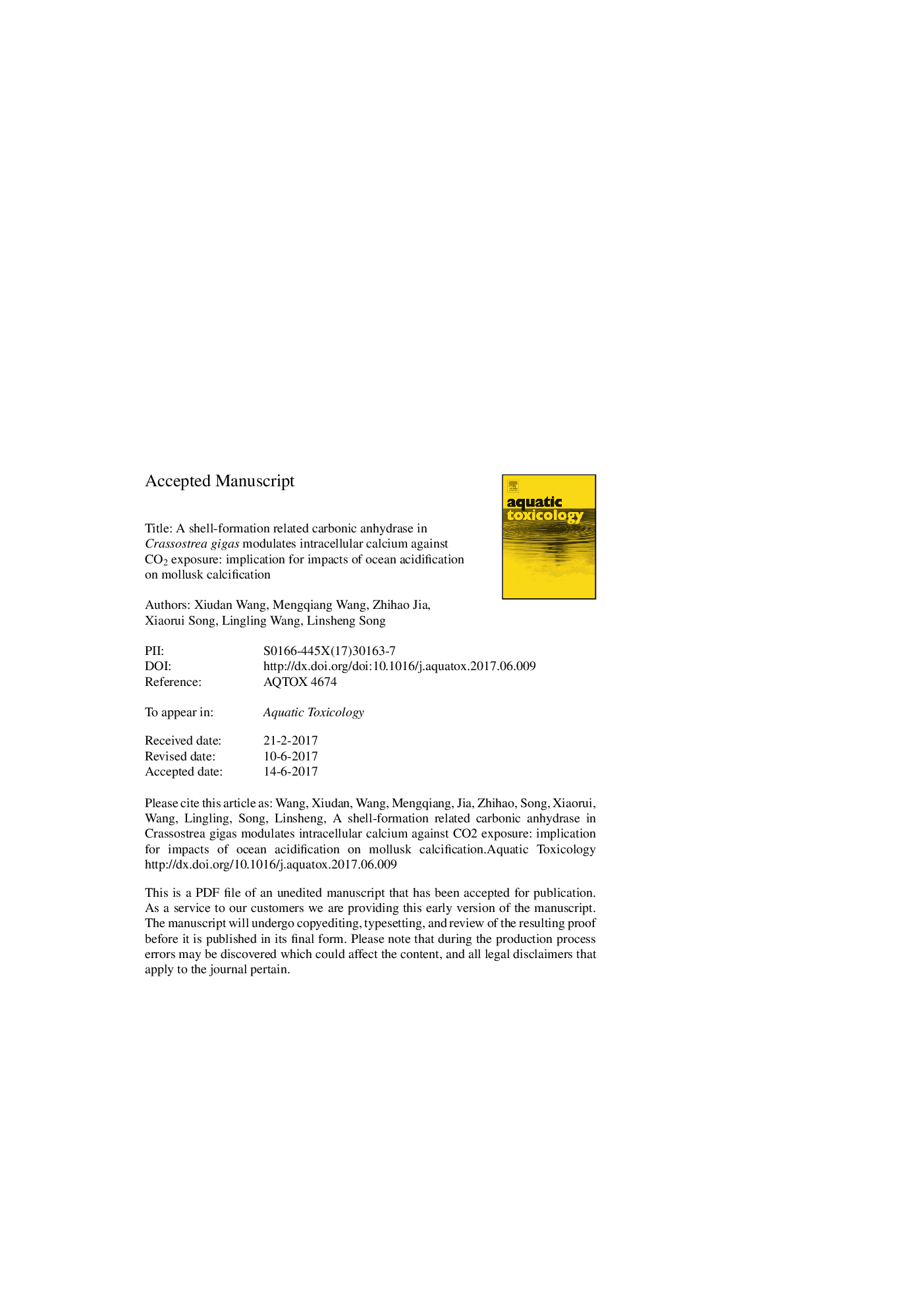| Article ID | Journal | Published Year | Pages | File Type |
|---|---|---|---|---|
| 5764190 | Aquatic Toxicology | 2017 | 49 Pages |
Abstract
Ocean acidification (OA) could decrease the shells and skeletons formation of mollusk by reducing the availability of carbonate ions at calcification sites. Carbonic anhydrases (CAs) convert CO2 to HCO3â and play important roles in biomineralization process from invertebrate to vertebrate. In the present study, a CA (designated as CgCA) was identified and characterized in Pacific oyster C. gigas. The cDNA of CgCA was of 927 bp encoding a predicted polypeptide of 308 amino acids with a signal peptide and a CA catalytic function domain. The mRNA transcripts of CgCA were constitutively expressed in all tested tissues with the highest levels in mantle and hemocytes. During the early development period, the mRNA transcripts of CgCA could be detected in all the stages with the highest level in D-veliger larvae. Elevated CO2 increased the mRNA transcripts of CgCA in muscle, mantle, hepatopancreas, gill and hemocytes significantly (p < 0.05) and induced the translocation of CgCA in hemocytes and mantle. Moreover, elevated CO2 also caused the decrease of intracellular Ca2+ in hemocytes (p < 0.05). The inhibition of CA by acetazolamide and suppression of CgCA gene via RNA interference could increase the intracellular Ca2+ in hemocytes (p < 0.05). Besides, the decrease of intracellular Ca2+ content caused by Ca2+ reagent ionomycin could affect localization of CgCA in mantle tissue. The results indicated CgCA played essential roles in calcification and elevated CO2 accelerated the mutual modulation between calcium and CgCA, implying reduced calcification rate and dissolved shells under OA.
Related Topics
Life Sciences
Agricultural and Biological Sciences
Aquatic Science
Authors
Xiudan Wang, Mengqiang Wang, Zhihao Jia, Xiaorui Song, Lingling Wang, Linsheng Song,
